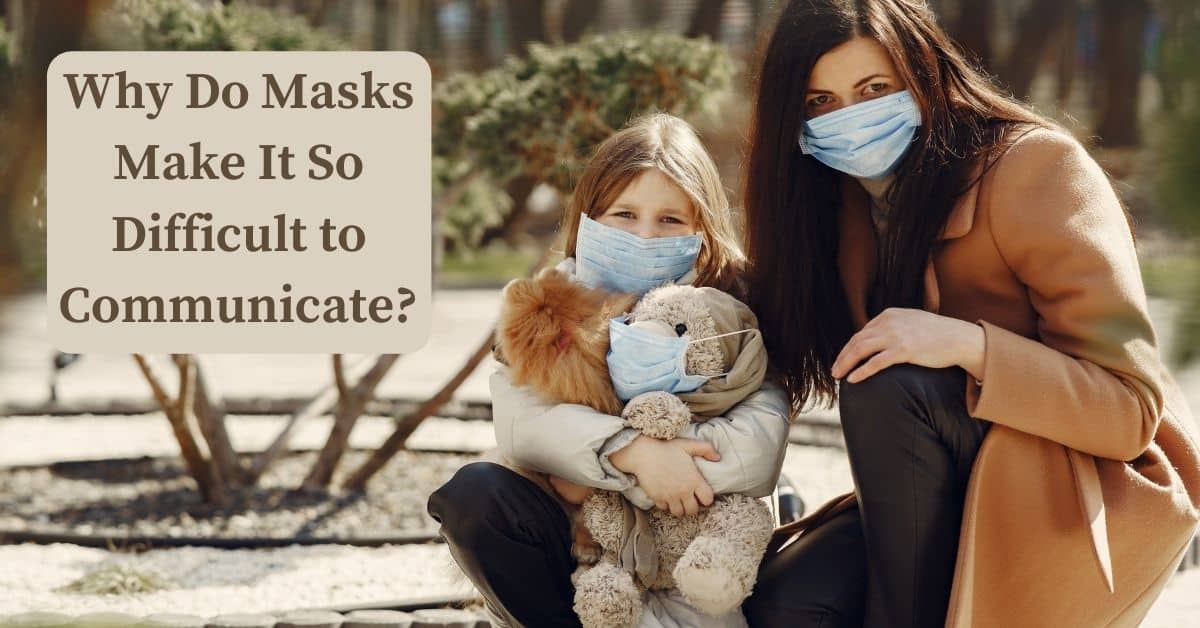
Public health officials are requesting that we all wear masks when we’re out doing errands and when we’re meeting with friends. For both people with normal hearing and people with hearing loss, wearing a mask can make it difficult to communicate. Masks can make it harder to talk, muffle speech, and make it hard to understand what someone is saying.
Are We Lip Reading?
It seems strange that we need to see someone’s mouth to hear what they’re saying. We can talk on the phone without any visual cues at all. However, in face to face communication we rely on visual cues to help us understand what’s being said. These visual cues include body language, hand gestures, and even the movement of the mouth. All these cues help us understand the context, emotion, and words that are being said.
We’re not exactly lip reading, but seeing someone’s mouth helps us understand what’s being said. Wearing a mask cuts off this visual cue and makes it harder to follow conversations.
Wearing a Mask Muffles Sound
In addition to reducing visual cues, wearing a mask does muffle sounds. The layers of fabric over the face makes sounds softer, and will dampen the sound. Along with muffling the sound, a mask over the mouth and nose can sometimes restrict the muscle movements around our lips and mouth, and slightly change the sound of our speech.
Hearing is Harder in Background Noise
If you and a friend are wearing masks in a quiet place, chances are you’ll be able to hear most of what’s being said. However, if you’re in a place with a lot of background noise, understanding speech through a mask can be very difficult. In noisy settings where we can’t hear all the sounds, we often rely heavily on visual cues and seeing someone’s lips will help us determine what is said.
When the mouth is covered by a mask, we try to use other cues, like small movements of the cheeks or chin, to understand speech. Loose fitting cloth masks can make it harder to understand speech because these masks are so loose that it’s hard to detect any movements of the cheeks or chin.
How to Communicate While Wearing Masks
Wearing masks over our mouth and nose does affect speech production and speech comprehension. However, just because a mask makes it harder to communicate doesn’t mean we should stop communicating. Even when wearing masks, we can still communicate fairly well. Here are a few tips to make it easier to communicate while wearing a mask:
- Reduce background noise. Trying to have a conversation in a noisy place is hard at the best of times, and when wearing masks, it can seem impossible. Reduce the background noise or move to a quiet place to have a conversation.
- Talk a bit slower. Another way to improve communication is to speak a bit slower and slightly louder. Speaking very slowly or yelling will distort the sound, but talking slightly slower and a bit louder can make it easier to understand what’s being said.
- Use body language. Since your mouth is covered, use more body language to express yourself. Use hand gestures to emphasize your points and improve speech comprehension.
- Wear a mask that fits. Find a mask that fits snugly over your nose and mouth. A tighter mask will make it easier to see movements of your cheeks and chin under the mask, and make it easier to communicate.
- Wear a transparent mask. You may be able to find a transparent mask that will show more of your face. This will make it easier for people to read your lips and use visual cues for better communication.
Schedule a Hearing Test
Are you having a really hard time communicating with masks? People with normal hearing may have a hard time hearing some sounds, but they will still be able to communicate. If you can’t have a conversation while wearing a mask, it’s a sign you should schedule a hearing test. Wearing a quality pair of hearing aids will help you hear at home and when you’re out and about with your mask. It will also make it easier for you to have a clear conversation and communicate with people wearing masks.
